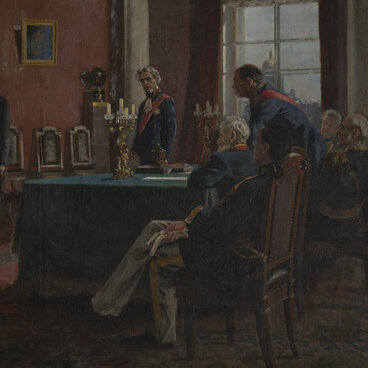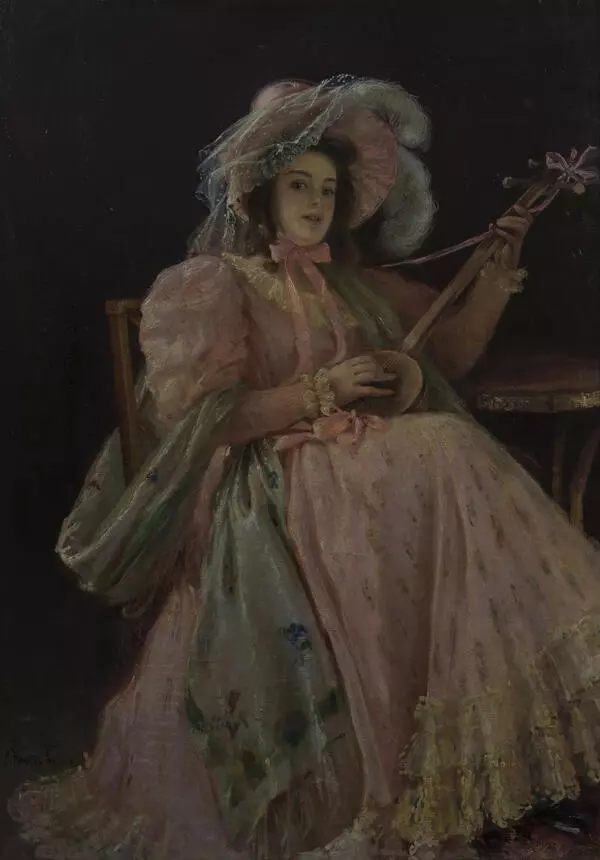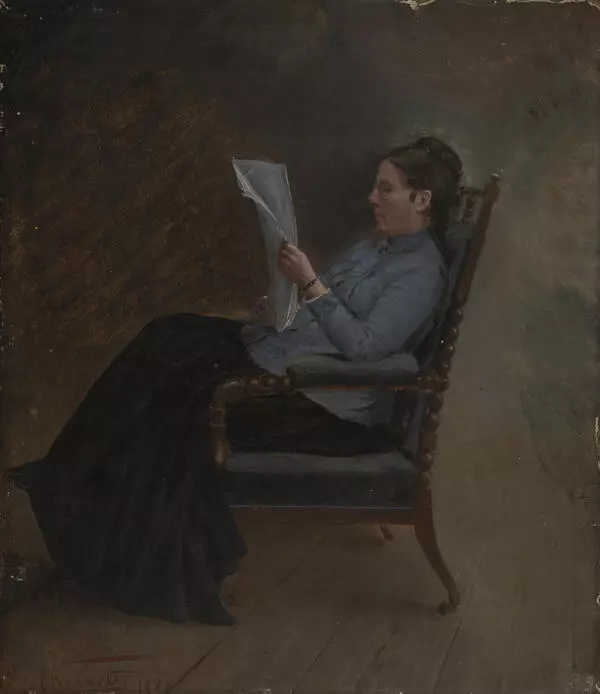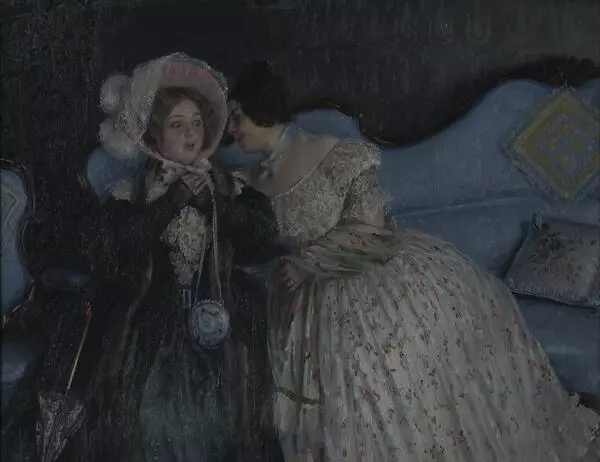The Ostrogozhsk Museum of History and Art houses a watercolor portrait of the famous surgeon Alexander Ebermann painted by Sophia Ivanovna Junker-Kramskaya. A descendant of the famous urologist Alexander Leontyevich Ebermann, the surgeon was depicted at his country house in Tsarskoye Selo. It is likely that the famous surgeon was a friend of Sophia Kramskaya and that their friendship was the reason why she painted his portrait.
Moving in the artistic circles since childhood, Sophia, the only daughter of Ivan Kramskoy, was warmly remembered by the people who knew her well. She was friends with the daughters of Pavel Tretyakov, and one of them — Vera Pavlovna — dedicated several pages of her memoirs to Sophia Kramskaya, describing her quick-wittedness, artistic talent, lively disposition, charisma, and charm. Ilya Repin admired “her silhouette”, and the 30-year-old Alexandre Benois courted her. In the early 1880s, Sophia Kramskaya was engaged to Sergey Botkin, a son of the famous clinician.
In the late 1880s and early 1890s, Sophia Ivanovna received numerous commissions from members of the aristocracy. Her most famous works are a series of portraits depicting representatives of high society, including a watercolor portrait of Grand Duke Konstantin Konstantinovich of Russia as Hamlet, and an oil portrait of the actress Maria Savina. In the 1910s, Junker-Kramskaya became fascinated with the art of miniature. She also worked as an illustrator and participated in preparing the anniversary edition dedicated to the 100th birthday of Alexander Pushkin.
Despite all the hardships that the talented artist had to endure after the Revolution of 1917, Sophia Ivanovna continued working and was always surrounded by people. According to her contemporaries, Junker-Kramskaya was a pious woman and always tried to help those in need.
For Ostrogozhsk and all initiators of the Art Gallery named after Ivan Kramskoy, Sophia Ivanovna was the guardian angel who undertook a lot of activities associated with raising funds and inviting artists who donated both their own works and Kramskoy’s paintings from their private collections. During the Soviet period, when the name of the artist and philanthropist Sophia Ivanovna Junker-Kramskaya languished in obscurity for decades, the Ostrogozhsk Art Gallery housed her paintings and drawings.
Moving in the artistic circles since childhood, Sophia, the only daughter of Ivan Kramskoy, was warmly remembered by the people who knew her well. She was friends with the daughters of Pavel Tretyakov, and one of them — Vera Pavlovna — dedicated several pages of her memoirs to Sophia Kramskaya, describing her quick-wittedness, artistic talent, lively disposition, charisma, and charm. Ilya Repin admired “her silhouette”, and the 30-year-old Alexandre Benois courted her. In the early 1880s, Sophia Kramskaya was engaged to Sergey Botkin, a son of the famous clinician.
In the late 1880s and early 1890s, Sophia Ivanovna received numerous commissions from members of the aristocracy. Her most famous works are a series of portraits depicting representatives of high society, including a watercolor portrait of Grand Duke Konstantin Konstantinovich of Russia as Hamlet, and an oil portrait of the actress Maria Savina. In the 1910s, Junker-Kramskaya became fascinated with the art of miniature. She also worked as an illustrator and participated in preparing the anniversary edition dedicated to the 100th birthday of Alexander Pushkin.
Despite all the hardships that the talented artist had to endure after the Revolution of 1917, Sophia Ivanovna continued working and was always surrounded by people. According to her contemporaries, Junker-Kramskaya was a pious woman and always tried to help those in need.
For Ostrogozhsk and all initiators of the Art Gallery named after Ivan Kramskoy, Sophia Ivanovna was the guardian angel who undertook a lot of activities associated with raising funds and inviting artists who donated both their own works and Kramskoy’s paintings from their private collections. During the Soviet period, when the name of the artist and philanthropist Sophia Ivanovna Junker-Kramskaya languished in obscurity for decades, the Ostrogozhsk Art Gallery housed her paintings and drawings.







